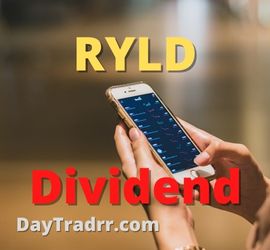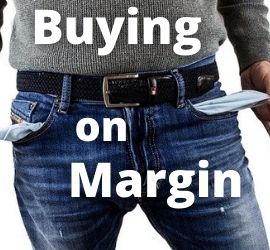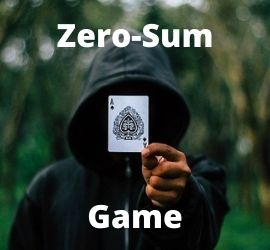RYLD Stock Dividend
 The Global X Russell 2000 Covered Call ETF buys stocks in the Russell 2000 Index and provides investment results in the form of an RYLD dividend. The ETF (RYLD) follows a “covered call” or “buy-write” strategy. So, the Fund buys the stocks in the Russell 2000 Index, and at times by exposure to the Vanguard Russell 2000 ETF. Then, the fund “writes” or “sells” corresponding call options on the Russell 2000 Index. The Global X Russell 2000 Covered Call ETF (RYLD) seeks to provide positive investment results. Profits are paid out in the form of an RYLD Dividend. In general, the fund aims to correspond to the price and yield performance of the Cboe Russell 2000 BuyWrite Index.
The Global X Russell 2000 Covered Call ETF buys stocks in the Russell 2000 Index and provides investment results in the form of an RYLD dividend. The ETF (RYLD) follows a “covered call” or “buy-write” strategy. So, the Fund buys the stocks in the Russell 2000 Index, and at times by exposure to the Vanguard Russell 2000 ETF. Then, the fund “writes” or “sells” corresponding call options on the Russell 2000 Index. The Global X Russell 2000 Covered Call ETF (RYLD) seeks to provide positive investment results. Profits are paid out in the form of an RYLD Dividend. In general, the fund aims to correspond to the price and yield performance of the Cboe Russell 2000 BuyWrite Index.
The fund invests at least 80% of its total assets in index component securities. Or, similar investments with economic characteristics that are substantially the same as the component securities’ economic characteristics. The index tracks the performance of a hypothetical portfolio that holds a collection of Russell 2000 Index stocks. Then, the fund “writes” a series of one-month at-the-money covered call options on the Russell 2000 Index.
Covered Call Explained
A covered call is an options trading strategy that provides a limited return for a limited risk. A covered call involves selling a call option on a stock already owned. In that way, the investor is “covered” (i.e. protected) if the stock rises and the call option expires in the money. Therefore, a covered call is a hedging strategy. In this case, the fund sells a portion of the stock’s upside for a set period of time in exchange for the option premium. Selling a call option is normally a risky move because it exposes the seller to unlimited losses if the stock soars. However, by owning the underlying stock, the fund can limit potential losses. Simultaneously, the fund can earn options premiums to generate additional income.
RYLD Dividend Yield
RYLD has a dividend yield of 13.80% and paid $2.66 per share in the past year. The dividend is paid every month and the next ex-dividend date is Dec 29, 2022.
Dividend Yield Explained
The dividend yield is calculated by dividing a company’s annual dividends per share by its current share price. Investors can secure a relatively stable cash flow by investing in companies with stable and high dividend yields. However, dividend yields can temporarily remain high even when a company is in financial trouble. In that case, if the company does not rebound quickly, the dividend may be cut soon.
Dividend Yield Example: Consider a stock that trades at $100 and pays $4.00 in dividends per year ($1.00 per quarter). In this instance, the company’s dividend yield is 4%
RYLD Dividend History
Global X Russell 2000 Covered Call ETF announced an ex-dividend date on 29-Dec-2022.
RYLD Dividend History 2022
| Ex-Dividend Date | Cash Amount | Pay Date |
|---|---|---|
| Nov 21, 2022 | $0.1986 | Nov 30, 2022 |
| Oct 24, 2022 | $0.1945 | Nov 1, 2022 |
| Sep 19, 2022 | $0.1955 | Sep 27, 2022 |
| Aug 22, 2022 | $0.2069 | Aug 30, 2022 |
| Jul 18, 2022 | $0.2119 | Jul 26, 2022 |
| Jun 21, 2022 | $0.2022 | Jun 29, 2022 |
| May 23, 2022 | $0.2113 | Jun 1, 2022 |
| Apr 18, 2022 | $0.2345 | Apr 26, 2022 |
| Mar 21, 2022 | $0.2402 | Mar 29, 2022 |
| Feb 22, 2022 | $0.2316 | Mar 2, 2022 |
| Jan 24, 2022 | $0.2232 | Feb 1, 2022 |
RYLD Dividend Payout:
- Number of times Global X Russell 2000 Covered Call ETF has decreased the dividend in the last 3 years: 14
- The 1-year dividend growth rate for RYLD is: 24.0%
- The number of times the stock has increased the dividend in the last 3 years: 22
- The trailing 12-month dividend yield for RYLD is: 13.8%
RYLD Stock – SEC Filings
Global X Funds – This page includes all SEC registration details as well as a list of all documents (S-1, Prospectus, Current Reports, 8-K, 10K, Annual Reports) filed by Global X Funds.
RYLD Dividend News & FAQs
How have RYLD shares performed in 2022?
Global X Russell 2000 Covered Call ETF’s stock was trading at $24.41 at the beginning of 2022. Since then, RYLD stock has decreased by 21.3% and is now trading at $19.20.
Is Global X Russell 2000 Covered Call ETF a good dividend stock?
Global X Russell 2000 Covered Call ETF (NYSEARCA: RYLD) pays an annual dividend of $2.66 per share and currently has a dividend yield of 13.81%. RYLD has a dividend yield higher than 75% of all dividend-paying stocks, making it a leading dividend payer.
What is Global X Russell 2000 Covered Call ETF’s stock symbol?
Global X Russell 2000 Covered Call ETF trades on the New York Stock Exchange (NYSE)ARCA under the ticker symbol “RYLD.”
Who are Global X Russell 2000 Covered Call ETF’s major shareholders?
Global X Russell 2000 Covered Call ETF’s stock is owned by a variety of institutional and retail investors. Top institutional investors include Royal Bank of Canada (1.90%), UBS Group AG (0.64%), Centaurus Financial Inc. (0.56%), Raymond James Financial Services Advisors Inc. (0.49%), Baird Financial Group Inc. (0.36%) and Brookstone Capital Management (0.34%).
How do I buy shares of Global X Russell 2000 Covered Call ETF?
Shares of RYLD stock can be purchased through any online brokerage account. Popular online brokerages with access to the U.S. stock market include WeBull, Vanguard Brokerage Services, TD Ameritrade, E*TRADE, Robinhood, Fidelity, and Charles Schwab.
Up Next: JEPI Dividend – JPMorgan Equity Premium Income ETF
 The JPMorgan Equity Premium Income ETF seeks to provide returns in the form of dividends (JEPI Dividend). The actively managed fund owns stocks associated with its primary benchmark, the Standard & Poor’s 500 Total Return Index (S&P 500 Index). The fund generates additional income by selling call options against its underlying portfolio of stocks. JEPI’s goal is to expose investors to less risk through lower volatility while still offering incremental income. Under normal circumstances, the fund invests at least 80% of its assets in equity securities. JEPI fund managers may also invest in other equity securities not included in the S&P 500 Index. In this way, the fund provides a hedge-fund-like strategy in the form of an ETF. JEPI was launched in May 2020.
The JPMorgan Equity Premium Income ETF seeks to provide returns in the form of dividends (JEPI Dividend). The actively managed fund owns stocks associated with its primary benchmark, the Standard & Poor’s 500 Total Return Index (S&P 500 Index). The fund generates additional income by selling call options against its underlying portfolio of stocks. JEPI’s goal is to expose investors to less risk through lower volatility while still offering incremental income. Under normal circumstances, the fund invests at least 80% of its assets in equity securities. JEPI fund managers may also invest in other equity securities not included in the S&P 500 Index. In this way, the fund provides a hedge-fund-like strategy in the form of an ETF. JEPI was launched in May 2020.




